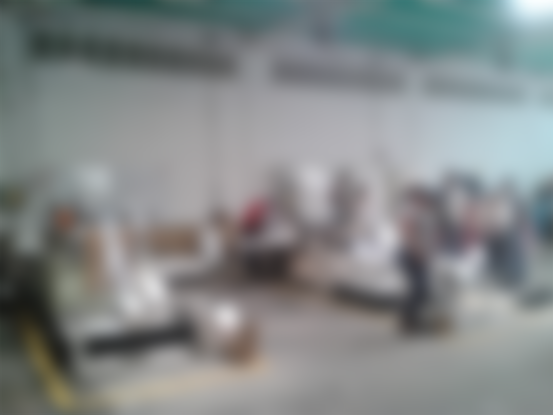Hazards in any activity, no matter how insignificant, can cause lost working hours and have repercussions in the medium and long term. In this sense, companies must try to identify the dangers and risks existing in each job, to prevent them from affecting their workers. Education, development and high performance of modern organizations depend to a large extent on effectiveness and efficiency, as well as adaptation and the sense of responsibility of human resources. That is why every day more organizations contribute time and money to the safety and prevention of accidents with injuries that occur in the workplace.

Industrial safety and occupational health should lay the foundations for the establishment of a philosophy that indicates the guidelines and objectives in the area of safety, hygiene and environment of every organization, acting as a guide for the administration of resources and allowing managers to define the results that are expected to be obtained in the medium and long term within the management. In this way, it will be possible that these can be clearly executed and satisfactory results are obtained. Risk analysis in the workplace should be a priority for today's organizations, especially where repetitive activities are developed and that apparently do not require great efforts, but that in the long run, can trigger occupational diseases and affect the productivity of the company. company.
Occupational accidents and diseases not only represent human suffering for the worker and his family, but also high economic costs for the productive sector and society in general. That is why the health and well-being of the working population, and consequently their productivity, are determining factors to achieve economic and social development, for which occupational hygiene and safety must control the risks existing in the work environment, as that these can cause unsafe conditions that lead to accidents or occupational diseases. For his part, Carrillo (2009) defines: The safe analysis by job position as a risk analysis methodology that allows an activity to be broken down into its sequence of basic tasks to facilitate the identification and / or reduction of hazards or risks that could generate unwanted events in each of these, through the implementation of preventive and litigating measures.

Therefore, risk analysis is a key element for planning preventive action in a company, since from this the protection and correction measures that will create adequate health and safety conditions are drawn up and developed. This analysis must be carried out on a mandatory basis and as many times as necessary depending on any change that occurs in the work environment, be it technological, regulatory, procedural, organizational, among others, that affects each and every one of the workers of companies, regardless of their qualification the activity that they develop.
Therefore, it can be complemented that safety at work would be a set of technical educational, medical and psychological measures, used to prevent accidents, eliminate unsafe environmental conditions and instruct or convince people about the implementation of measures preventive. Hence, lies the importance of hygiene and safety within organizations, which allows preventing and reducing accidents and illnesses, as well as preserving the health of workers, maintaining and increasing productivity, and reducing operating costs.
By properly training workers in risk prevention, it is possible to ensure that all staff are able to control their actions in an emergency situation. The appropriate techniques and procedures to carry out a correct planning of preventive activities are based on the initial analysis of the risks existing in the work environment, as well as on various actions that must be framed within the policy of action of both private companies and of public administrations.
The public company is exposed to different types of risks such as: physical risks, mechanical risks, biological risks, disergonomic risks, meteorological risks, psychosocial risks, chemical risks and electrical risks that can alter the correct functioning of its activities, in order to to avoid the materialization of these risks in accidents and minimize the consequences of the same in case they arrive

If this happens, the application of security measures is required to help reduce the risks to their lowest possible values. }
In this sense, a physical risk is associated with the probability of suffering bodily harm. There are various activities and tasks that present a high physical risk since their development can lead to injuries of different types and even, in the event of an error or accident, cause death.
For this reason, the first objective of occupational safety is the reduction and, in its effects, the elimination of occupational risks and illnesses, thus reducing the probability of accidents occurring. The second objective is the minimization of direct and consequential losses when accidents have occurred, acting to reduce the intensity, that is, controlling the accident and losses.
In addition, the relationship between health and work is remarkable since the person, when doing work, produces variations in the environment that surrounds him. These variations can be physical, mental and social, sometimes these changes can affect the health of the worker, damaging her initial balance, a situation she calls health. It is not work, but if the modifications that its performance introduces in the environment that can be aggressive for people make possible the existence of some problem in the workplace, in this way the health of workers is determined by the conditions of the environment environment.
Conclusions
A risk analysis makes it possible to determine the probability and severity of the consequences and with this the risk estimation, which will allow the adoption of relevant control measures that mitigate the risk and thus guarantee the worker decent working conditions for full exercise of their abilities.
recommendations
Adopt preventive measures that minimize the consequences of the risks studied in order to meet the needs of the maintenance area of said company.
Once the preventive measures have been applied, a meticulous follow-up must be carried out to verify its effectiveness, and if they do not meet the expectations, they must be modified in order to comply with the requirements.

Occupational Health And Safety Is Essential.
Raosubterraneo




The fact is any job you are doing they must be risk